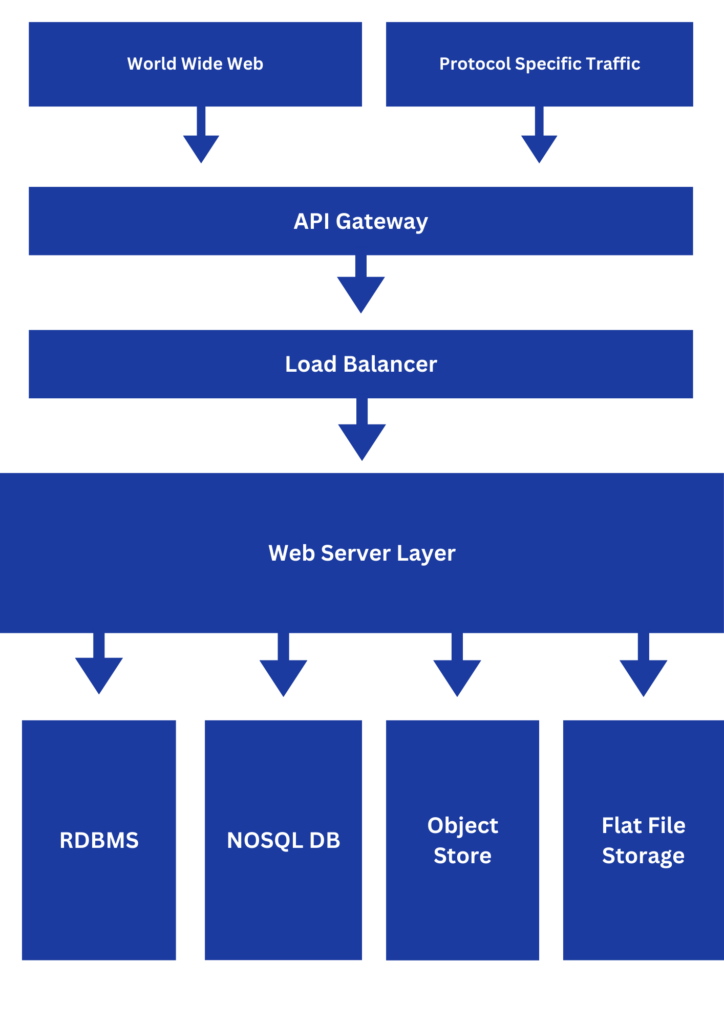Web server & DATA STORES integration renders a full stack experience. Web server are integrated with data stores to carry out database driven operations. The web server will store the code base and will process the code once the read and write request is generated by the end user.
The web server will not be able to store the data and hence it has to be connected with DB servers; Database servers will store all the media data and metadata.
The web server will connect to the database server with the help of the Database Driver and database extension. Once linked with the database server, the web server handles data processing and basic CRUD ops.
These are the types of data that will be processed by the web server and stored by the Database servers: Structured data \ Semi-structured data \ Object storage. Web server & DATA STORES integration needs to be tightly coupled.
For all 3 of them, different database drivers and connections will be needed, the Structured data will be stored in RDBMS, the semi-structured data will be stored in NOSQL DATABASE and the object data will be stored in Object stores.
NOTE: Files are objects as well but instead of BLOB / OBJECT STORE it is advised to store files in FLAT FILES SYSTEMS )(File storage)
The web server will process the data and then will store the data in its original format with the help of DATA STORES, web servers at an enterprise level will be connected with all 4 kinds of data stores ie RDBMS, NOSQL, BLOB STORAGE’S and FLAT FILES SYSTEMS.
Diagram

The article above is rendered by integrating outputs of 1 HUMAN AGENT & 3 AI AGENTS, an amalgamation of HGI and AI to serve technology education globally.